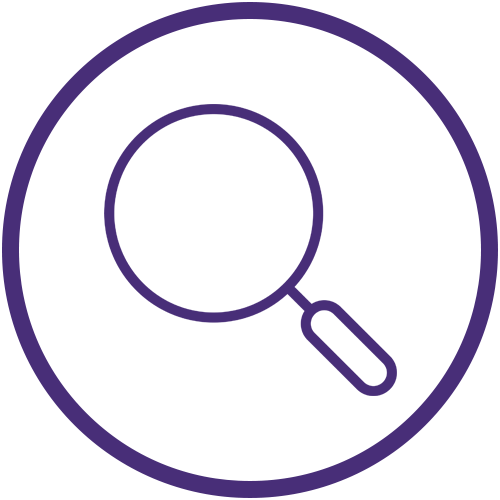
ISEP Course 9: Simulation Operations - May 2024
Course 9 explains the roles of the operation specialist and director in the simulation lab.
Key:
INACSL Simulation Education Program Course 9 Acknowledgement Files
Open to download resource.
Open to download resource.
This document includes speaker information, disclosures and learning outcomes to course 9.
Course 9 Pre-Test
5 Questions | 1 attempt | 0/9 points to pass
5 Questions | 1 attempt | 0/9 points to pass
Each course begins with a pre-test and ends with a post-test. You are not graded on the pretest questions.
Course 9 - Module 1: Introduction
Begin self-paced component package.
Begin self-paced component package.
Course 9 - Module 2: Simulation Operations Qualifications
Begin self-paced component package.
Begin self-paced component package.
Course 9 - Module 3: Operations Management
Begin self-paced component package.
Begin self-paced component package.
Course 9 - Module 4: Wrap Up
Begin self-paced component package.
Begin self-paced component package.
Course 9: Build the Scenario Discussion
Make 1 discussion post to continue.
Make 1 discussion post to continue.
You are designing a comprehensive simulation that includes treating an injured child and possible child abuse. You are ambitious in terms of offering physical, emotional, psychological, and interpersonal fidelity. It is a huge challenge and you need help.
Watch as Dr. Leland Rockstraw outlines a fidelity problem for you to apply to this challenge. You have seen this video before, but we are putting it to work for you again. This time map the problem described above with his discussion of fidelity.
Part 1: Work Together to Set the Stage:
For your initial post:
List the objectives for the simulation. Identify the kinds of learning: knowledge, skills, and attitudes)
Describe the moulage that will support the fidelity you prescribe.
Describe the technology you want to use.
What participant learner decisions do you want to implant? These could be treatment protocols, interpersonal action, emotional responses, etc.
What variations in terms of patient and parent behaviors do you want added? (i.e. Patient responses as parents enter and exit the treatment area.)
Part 2: Reach Out for Assistance:
Propose some solutions for your peers as a SimOps contribution whether they have one or not.
If they do not a have a SimOps, how could you frame this problem as a request for such a professional on your team? How would you frame your request for assistance mitigating the technical problem to your SimOps?
What outcomes from these requests do you anticipate?
How will these benefit the learners?
Course 9: Sim Operations Assignment
Graded as Complete/Incomplete | Due Date: 10/31/2024 at 7:59 PM (EDT)
Graded as Complete/Incomplete | Due Date: 10/31/2024 at 7:59 PM (EDT)
Now is the time for you to begin creating and/or revising your simulation-based education proposals. You should choose a template from the ones provided and begin to design your simulation. You will be provided feedback from your facilitator on your design so the more you include the more feedback you will receive as an iterative process. Please note that your proposal should minimally include all the information that has been covered in the courses that you have just completed. If this isn't the case, you may be asked to re-submit the assignment. This is to assure that you will be able to have a finished product by the end of the 12 courses.
To complete each course, you are required to provide a reflective journal entry. Each entry should contain a minimum of 500 words. The document submitted should be a cumulative document with headings and dates of the course journals you are submitting.
Reflection should consider this process:
• Description (keep this fairly short)
• Interpretation or analysis (this should be the main body of your work)
• Outcome or application (ensure you draw clear application to your future practice).
There are journal prompts for most course journals. These are intended to focus you on the materials that were covered in that module. Please note that some journals will have a Part I and a Part II because of the varied materials that are presented in that course. By the end of the ISEP program, your reflective journal will demonstrate your individual learning and progress as a simulation educator/practitioner.
Simulation Based Education Proposal Assignment
Graded as Complete/Incomplete | Due Date: 10/31/2024 at 7:59 PM (EDT)
Graded as Complete/Incomplete | Due Date: 10/31/2024 at 7:59 PM (EDT)
Now is the time for you to begin creating and/or revising your simulation-based education proposals. You should choose a template from the ones provided and begin to design your simulation. You will be provided feedback from your facilitator on your design so the more you include the more feedback you will receive as an iterative process. Please note that your proposal should minimally include all the information that has been covered in the courses that you have just completed. If this isn't the case, you may be asked to re-submit the assignment. This is to assure that you will be able to have a finished product by the end of the 12 courses.
Course 9 Post-Test
5 Questions | 1 attempt | 0/9 points to pass
5 Questions | 1 attempt | 0/9 points to pass
This is the Course 9 assessment. All participants must achieve an 80% or better to complete this course and completed the journal assignment to receive the course certificate and advance to the next course.
Course 7-9 Evaluation
5 Questions
5 Questions
Please complete this brief survey before advancing to the next course.



